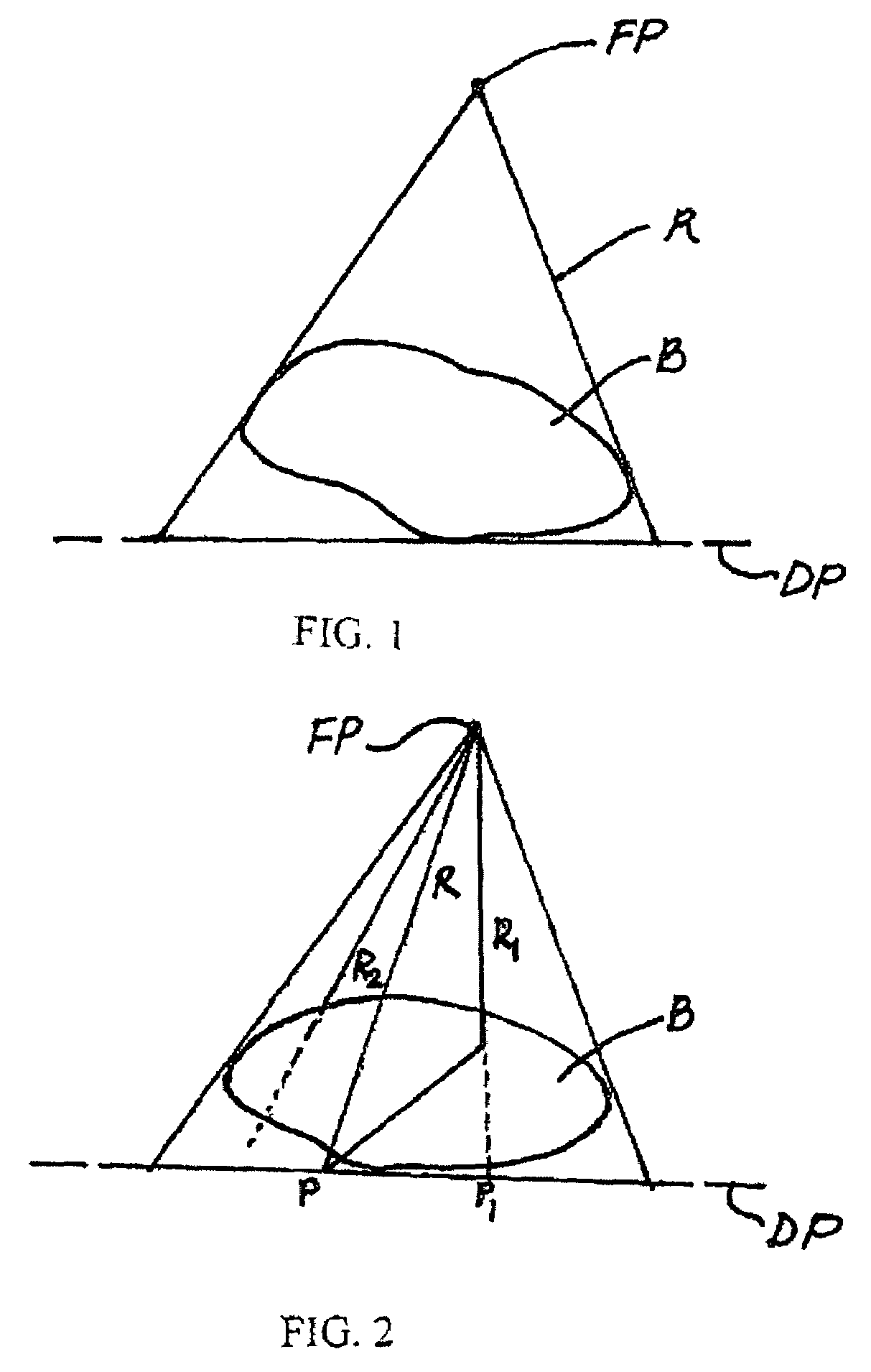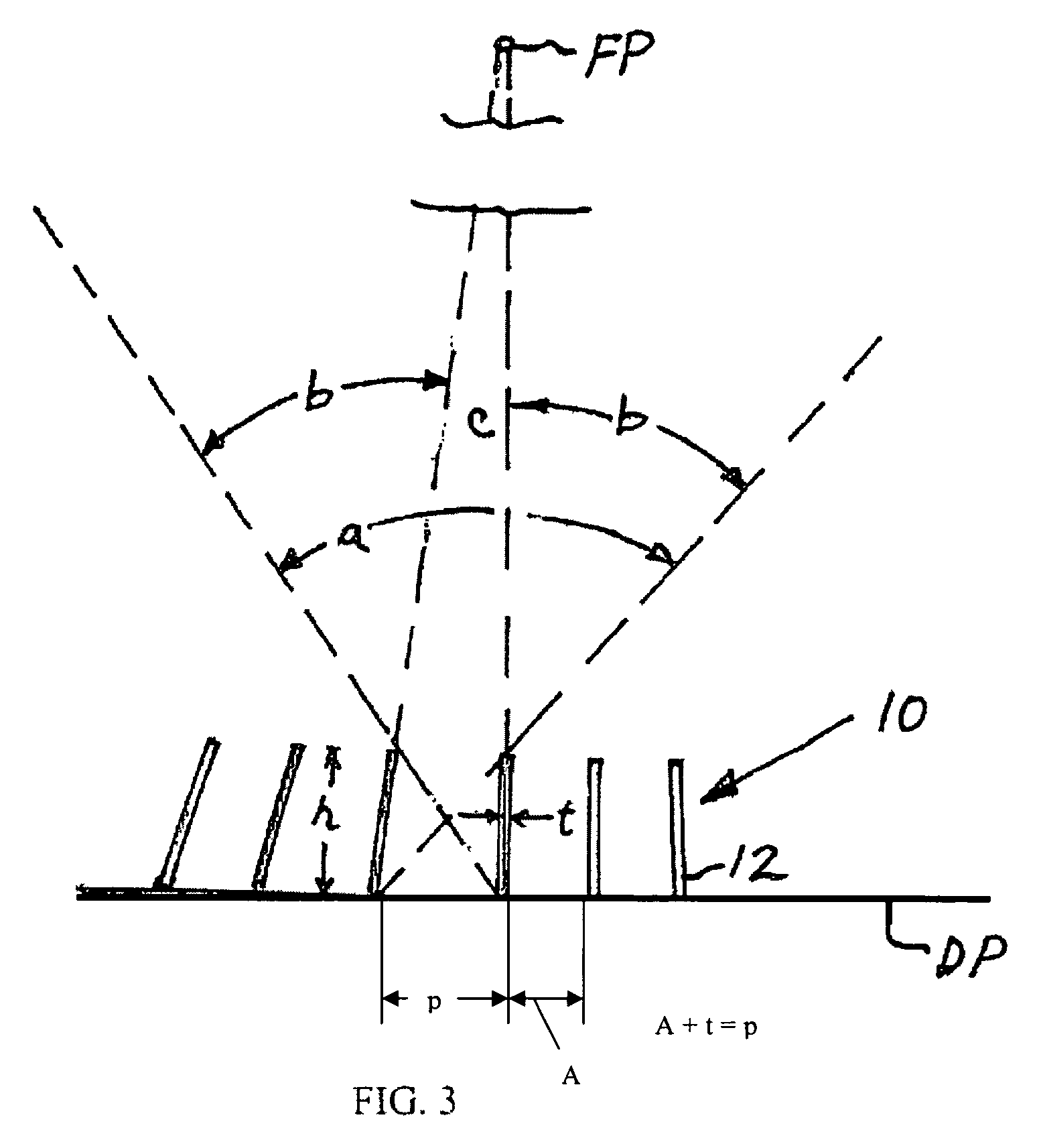Method for making X-ray anti-scatter grid
a grid and x-ray technology, applied in the field of medical radiography, can solve the problems of information-containing x-ray radiation, scattered x-ray radiation is particularly serious, aluminum or fiber interspace filler material absorbs some of the primary, and low energy
- Summary
- Abstract
- Description
- Claims
- Application Information
AI Technical Summary
Benefits of technology
Problems solved by technology
Method used
Image
Examples
Embodiment Construction
[0020]X-ray imaging uses the fact that x-rays “R” are extremely penetrating but are absorbed by the material “B” (such as a patient's body through which they pass. An x-ray image is the two-dimensional map of the x-ray absorption of the material “B” lying between an x-ray source located at a focal point “FP” and an X-ray detector located at a detector plane “DP”. FIG. 1 shows a typical medical x-ray imaging situation. The quality of the image depends on the fact that a significant fraction of the x-rays R are absorbed rather than scattered. Referring to FIG. 2, Ray R is emitted from the source located at the focal point FP and detected at point P by the X-ray detector located at the detector plane DP. Ray R1 scatters and is also detected at the point P. Ray R2 is totally absorbed and, therefore, not detected. In the making of an image, occurrences such as these happen many millions of times.
[0021]The fact that R1 scattered and was detected at P causes density along the ray R1 to be ...
PUM
 Login to View More
Login to View More Abstract
Description
Claims
Application Information
 Login to View More
Login to View More - R&D
- Intellectual Property
- Life Sciences
- Materials
- Tech Scout
- Unparalleled Data Quality
- Higher Quality Content
- 60% Fewer Hallucinations
Browse by: Latest US Patents, China's latest patents, Technical Efficacy Thesaurus, Application Domain, Technology Topic, Popular Technical Reports.
© 2025 PatSnap. All rights reserved.Legal|Privacy policy|Modern Slavery Act Transparency Statement|Sitemap|About US| Contact US: help@patsnap.com



